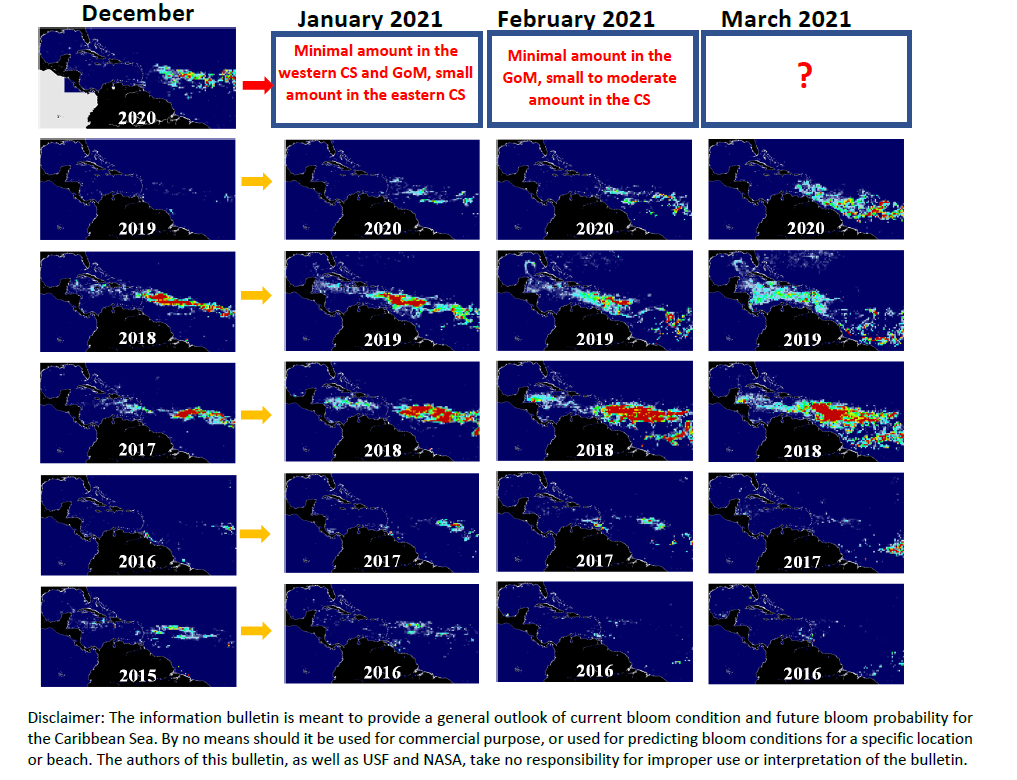The maps show Sargassum abundance, with warm colors representing high abundance. In December 2020, the overall Sargassum amount increased in the offshore regions of the central Atlantic, including the Central West Atlantic (CWA, i.e., the region east of the Lesser Antilles in the maps above) and the Central East Atlantic (CEA). The following regions remained largely free of Sargassum mats: the western Caribbean Sea (CS), Gulf of Mexico (GoM), Florida Straits, and east coast of Florida. In all regions combined, the total Sargassum amount in the tropical Atlantic increased from 1.4M tons in November to ~3.2M tons in December, similar to that in December 2017 (3.0M) and much higher than all previous bloom years except December 2018. In contrast, along the west Africa coast from The Gambia to Liberia (not shown in the maps below), the Sargassum amount was significantly reduced to only ~0.02M tons.
Looking ahead, the GoM, Florida Straits, and east coast of Florida will continue to be largely free of Sargassum in the coming months, possibly through winter. However, since considerable amount of Sargassum was already developed in the CWA, there is a possibility that the eastern Caribbean will start to experience small to moderate amounts of Sargassum in January to February 2021. We will keep a close eye on how Sargassum in the CS and the tropical Atlantic may evolve in the next two months. More updates will be provided by the end of January 2021, and more information and imagery can be found from the Sargassum Watch System (SaWS, https://optics.marine.usf.edu/projects/saws.html )



